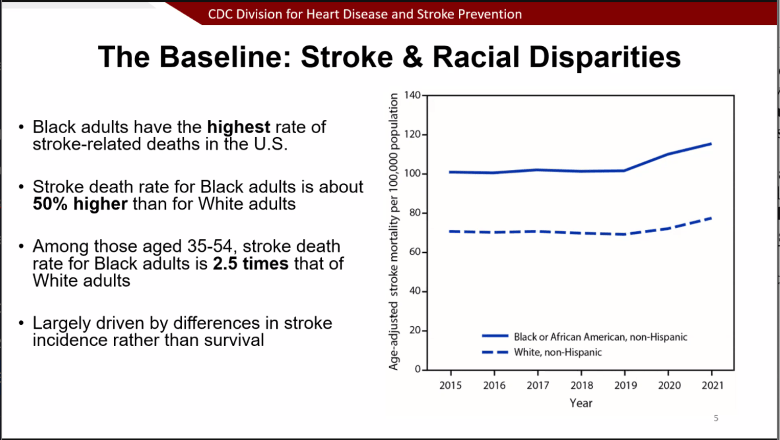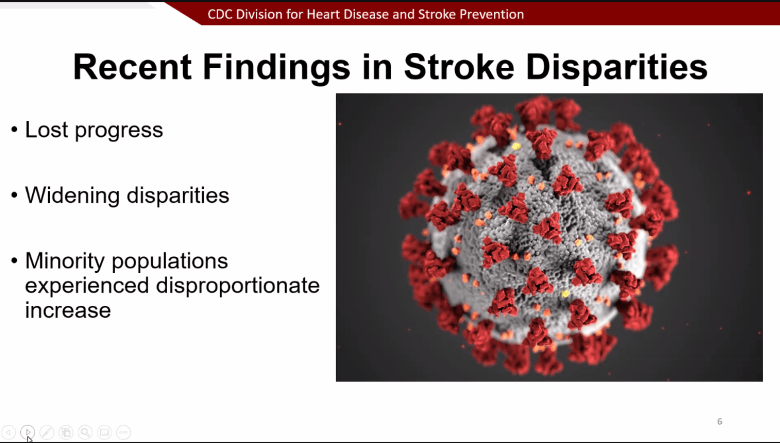Public health leaders and scientists from the Centers for Disease Control and Prevention presented on May 17 recent stroke-related data to discuss the implications of stroke in the U.S.
The study found that stroke-related disparities among Black and white adults persisted and widened during the COVID-19 pandemic. The percentage of excess stroke deaths during the pandemic was higher among Black adults (9.4%) than white adults (6.9%).
Medical experts weighed in on the stroke risk factors and ways to improve access to health care treatment.
Credit: CDC Division for Heart Disease and Stroke Prevention
“During the COVID-19 pandemic, the US lost some progress that it had gained in reducing disparities in stroke-related deaths between Black and white adults,” said Deputy Associate Director for Science CDC Division of the Heart Disease and Stroke Prevention, Adam Vaughan. “The disparities between Black and white adults were driven by differences in hypertension, treatment, and control, which are in turn rooted in upstream social determinants of health during the pandemic.”
Vaughan said the pandemic disrupted healthcare access for many people, which may have delayed treatment of strokes and managing hypertension. It also impacted the mental health, physical activity, diet, and sleep quality among Black adults.
Booker Daniels, health communication team lead for the CDC Division of Heart Disease and Stroke Prevention, said non-medical factors influence health outcomes, including economic policies, climate change, and political systems.
 Credit: CDC Division for Heart Disease and Stroke Prevention
Credit: CDC Division for Heart Disease and Stroke Prevention
“In 2021, the CDC declared racism a serious public health threat because racism contributed in so many ways to the inequities in access and to social and economic benefits such as housing, education, wealth, and employment,” Daniel said. “The goal of this work is to achieve health equity in which everyone has the opportunity to be as healthy as possible.”
 Credit: CDC Division for Heart Disease and Stroke Prevention
Credit: CDC Division for Heart Disease and Stroke Prevention
Here are some tips from the CDC that you can use to reduce your risks:
Try to be physically active
Add fruits and vegetables to your diet
Take prescribed medications for your blood pressure and cholesterol
Monitor your blood pressure and make sure it is at a normal range
Understand your patterns and know what increases your blood pressure
Follow your instincts and always self-advocate
Know your family history



